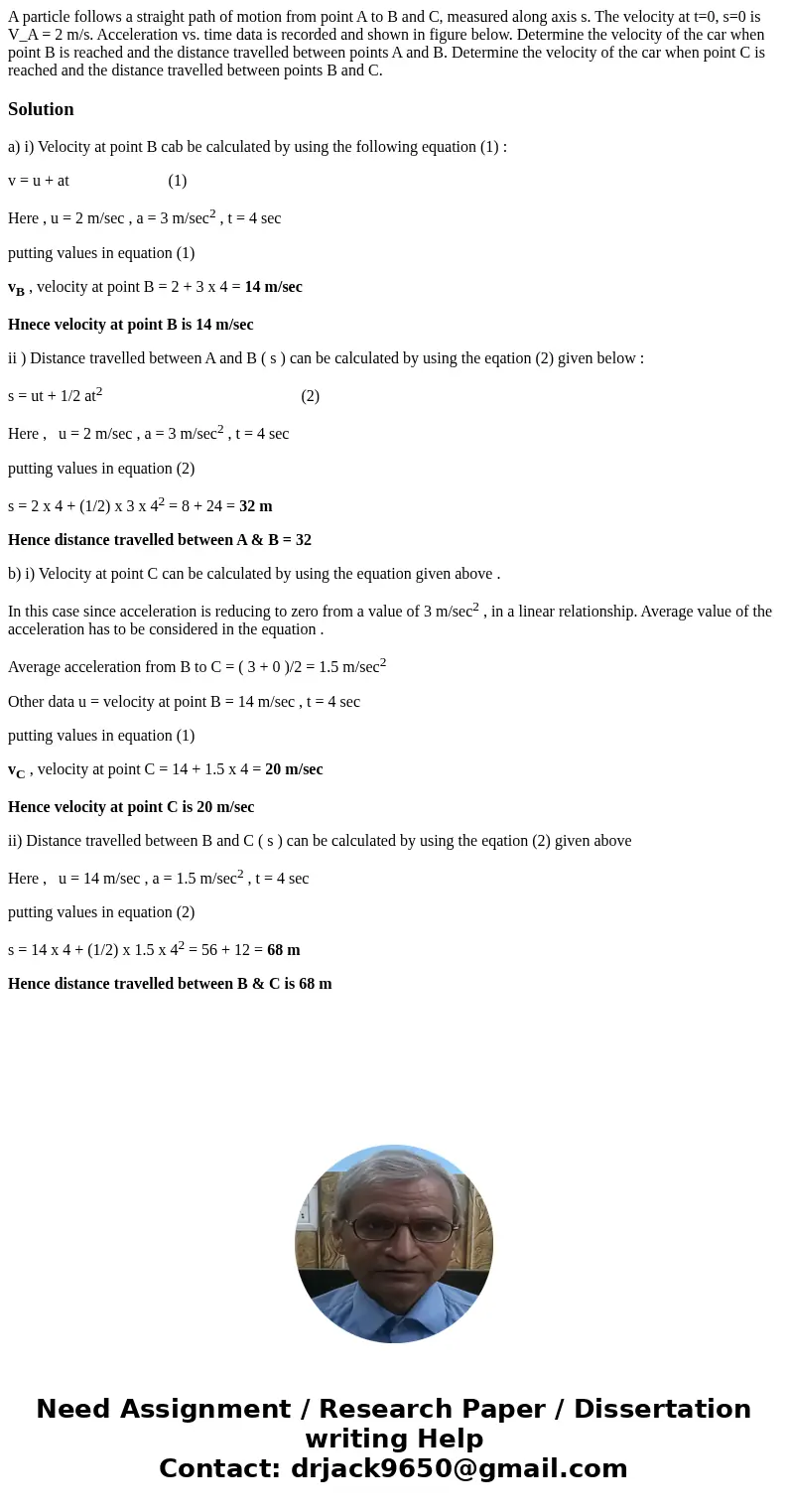A particle follows a straight path of motion from point A to
Solution
a) i) Velocity at point B cab be calculated by using the following equation (1) :
v = u + at (1)
Here , u = 2 m/sec , a = 3 m/sec2 , t = 4 sec
putting values in equation (1)
vB , velocity at point B = 2 + 3 x 4 = 14 m/sec
Hnece velocity at point B is 14 m/sec
ii ) Distance travelled between A and B ( s ) can be calculated by using the eqation (2) given below :
s = ut + 1/2 at2 (2)
Here , u = 2 m/sec , a = 3 m/sec2 , t = 4 sec
putting values in equation (2)
s = 2 x 4 + (1/2) x 3 x 42 = 8 + 24 = 32 m
Hence distance travelled between A & B = 32
b) i) Velocity at point C can be calculated by using the equation given above .
In this case since acceleration is reducing to zero from a value of 3 m/sec2 , in a linear relationship. Average value of the acceleration has to be considered in the equation .
Average acceleration from B to C = ( 3 + 0 )/2 = 1.5 m/sec2
Other data u = velocity at point B = 14 m/sec , t = 4 sec
putting values in equation (1)
vC , velocity at point C = 14 + 1.5 x 4 = 20 m/sec
Hence velocity at point C is 20 m/sec
ii) Distance travelled between B and C ( s ) can be calculated by using the eqation (2) given above
Here , u = 14 m/sec , a = 1.5 m/sec2 , t = 4 sec
putting values in equation (2)
s = 14 x 4 + (1/2) x 1.5 x 42 = 56 + 12 = 68 m
Hence distance travelled between B & C is 68 m

 Homework Sourse
Homework Sourse